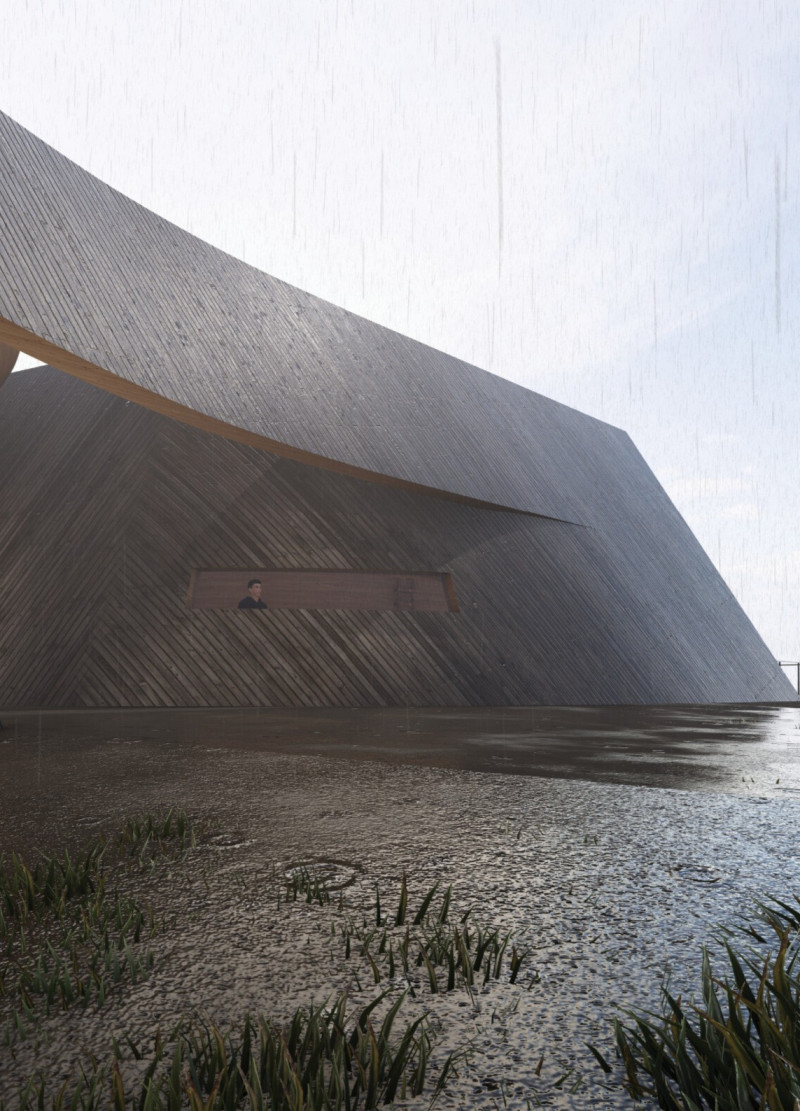5 key facts about this project
The design represents a commitment to creating an environment conducive to both individual and collective experiences. By integrating living spaces with commercial areas, the project fosters a sense of community while also addressing practical needs. The layout is intentionally open and accessible, inviting pedestrians into the space and encouraging social engagement among users. This approach extends beyond mere utility; it evokes a lifestyle that values interaction, well-being, and connection to the environment.
The building’s facade is characterized by its use of a variety of materials that not only enhance its aesthetic appeal but also align with sustainable design principles. Concrete, steel, glass, and wood are skillfully combined to create a structure that is both modern and welcoming. The limestone finishes—particularly in the base—anchor the building to its geographical context, while the extensive use of glazing blurs the boundaries between interior and exterior spaces. This transparency allows natural light to permeate the building, creating a bright, inviting atmosphere that encourages occupants to engage with their surroundings.
Inside, the project is organized around a central atrium that acts as the heart of the building. This central space is designed to be flexible, accommodating various activities from community events to casual gatherings. The treatment of this atrium showcases the project's unique design approach—natural ventilation strategies, combined with landscaped elements, promote a sense of tranquility and connection to nature. This thoughtful integration of natural elements extends to outdoor spaces, where terraces and green roofs provide residents and visitors with opportunities to enjoy outdoor activities while contributing to biodiversity in the urban setting.
Attention to detail is evident throughout the project, particularly in the design of vertical circulation elements. Stairwells not only serve as functional connectors but also as spaces of interaction, featuring art installations that encourage reflection and dialogue among users. The careful placement of windows and balconies throughout the building offers varying perspectives, promoting engagement with the urban fabric and allowing for a dynamic interplay of light and shadow throughout the day.
Unique design approaches are also reflected in the project’s commitment to sustainability. The implementation of green roofs helps manage stormwater runoff while providing insulation and habitat for urban wildlife. Solar panels, strategically placed on the roof, contribute to energy efficiency, demonstrating a responsible approach to resource consumption. The project also incorporates rainwater harvesting systems that promote water conservation, emphasizing the need for environmentally conscious design in contemporary architecture.
The use of local materials wherever possible speaks to the project's desire to reflect its regional identity while minimizing transportation impacts. This not only enhances the building's connection to the place but also supports local economies and promotes a sustainable cycle of use.
In summary, this architectural project is a notable example of how thoughtful design can address both communal and individual needs within an urban context. With its emphasis on sustainability, community engagement, and quality materials, the project demonstrates a clear vision of modern living. For those interested in exploring further, reviewing the architectural plans, sections, and designs reveals deeper insights into the design intent and execution. Engaging with these elements provides a comprehensive understanding of the architectural ideas that underpin this well-conceived project.


























